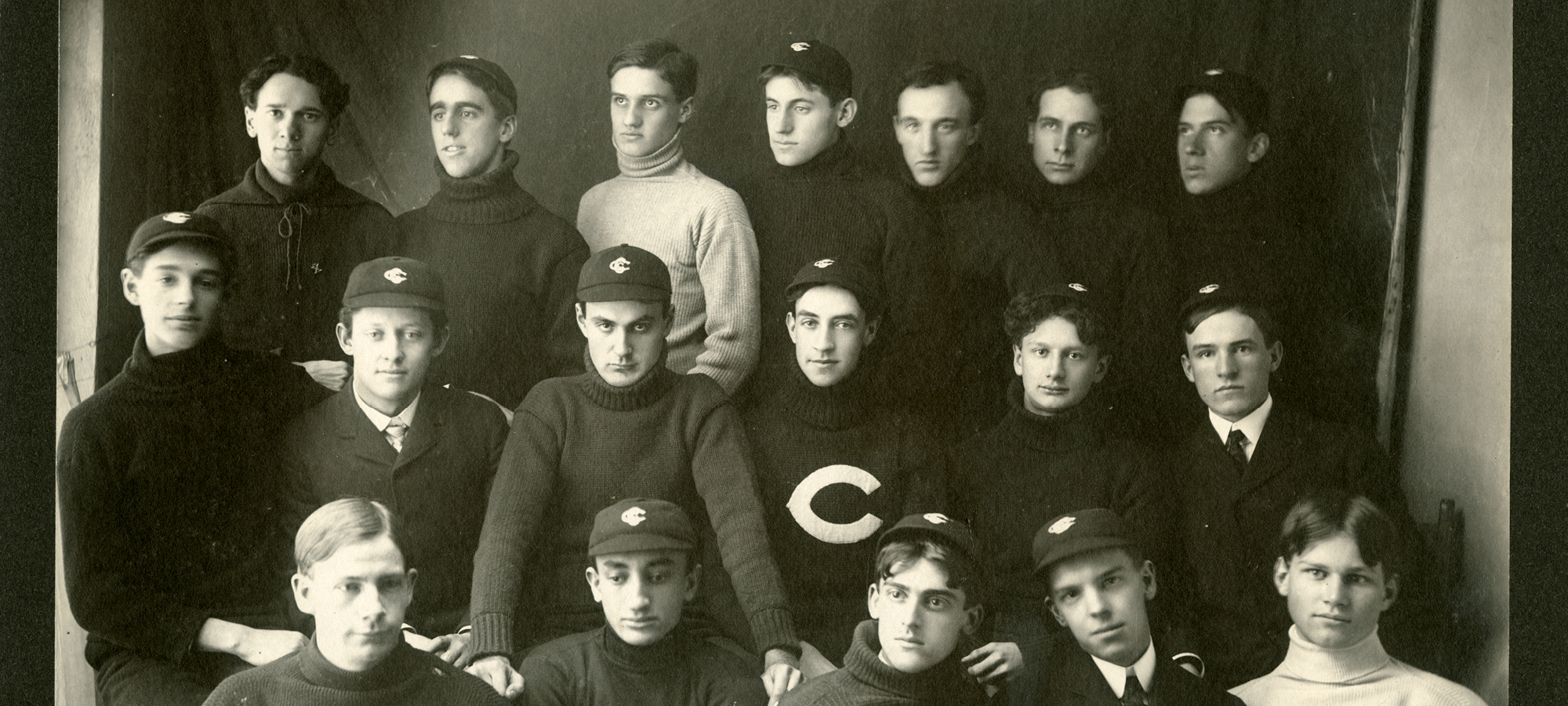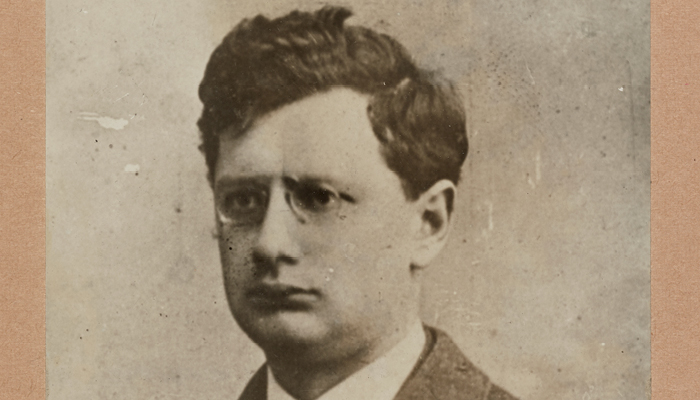
Xenophon de Blumenthal Kalamatiano, AB 1902 (middle row, second from right), shown here with his Maroon cross-country teammates, became a State Department spy in 1918. (UChicago Photographic Archive, apf5-03109, University of Chicago Library)
A College track star turned secret agent and a plot to kill Vladimir Lenin.
In 1900, nine years into his tenure as the University’s founding president, William Rainey Harper was exhausted. Over tea one afternoon, he confided in a friend, philanthropist and adventurer Charles R. Crane. As an unlikely rest cure, Crane offered to take Harper with him on his upcoming trip to Russia. Harper accepted.
The biblical scholar fell in love with Russia: the people, music, food, culture, traditions. When he returned, he convinced his son, Samuel N. Harper, AB 1902, EX’09, to learn Russian abroad so he could teach it at UChicago.
But President Harper’s traveling companion wasn’t in Russia just for pleasure. Before the United States created the Central Intelligence Agency and the National Security Agency, the government recruited “casual” agents—businessmen, teachers, clergy, students, anyone who had a legitimate reason to be abroad—to supply information. During those chaotic years in Russia, Crane and Sam Harper were among “America’s most valuable intelligence sources,” according to The Lenin Plot: The Unknown Story of America’s War Against Russia (Pegasus Books, 2020) by Barnes Carr.
“[Sam] Harper was almost certainly a recruiter for American intelligence,” Carr writes in the book, “though he never admitted that in his letters and papers.” Carr cites a 1915 letter to Harper—by then an assistant professor of Russian at UChicago—from his College classmate Xenophon de Blumenthal Kalamatiano, AB 1902.
Kalamatiano, a Russian American who spoke both languages flawlessly, had been a scholarship student, a founding member of Sigma Alpha Epsilon, and a track star. By 1915 he was the American representative for a Russian trade group. His letter to Harper offers support for American men who would come to Russia for a few years to learn the language and commercial customs. Is there something more to read between the lines? Carr thinks so.
As World War I dragged on, Kalamatiano—who was already a casual agent, Carr suspects—struggled financially. In 1918, needing a stable job with a dependable paycheck, he signed on with the State Department as a paid spy.

This career move did not end well for Kalamatiano, as readers of The Lenin Plot know from the first chapter, “A Forgotten Man.” Carr, who considers fiction writing “my main calling in life,” jumps around in the chronology for dramatic effect. Readers first encounter Kalamatiano, “the first American spy to ever be sentenced to death in Russia,” in solitary confinement in a Moscow prison, awaiting his turn to meet the firing squad.
Kalamatiano had been arrested for his role in a failed conspiracy to assassinate Vladimir Lenin, overthrow the Soviet regime, and replace it with a provisional government more friendly to the Allies. Lenin had incurred their ire by withdrawing Russia from the war; fearful of the Germans, the Allies wanted the Russians back in. Kalamatiano endured mock executions and terrible conditions before he was finally released three years later—partly as a result of a pressure campaign on the State Department by the brothers of Sigma Alpha Epsilon. He returned to Hyde Park in 1921 but died two years later at the age of 41.
In the final section of the book, Carr focuses on a little-known military intervention in Russia. The American Expeditionary Force to North Russia, nicknamed the Polar Bears, was sent to the seaport Archangel, allegedly to defend munitions there—though Carr suspects that wasn’t the real goal. Like the plot to kill Lenin, the campaign was a failure.
The story of how Carr happened upon his subject reads a bit like a spy novel too. As a Tulane University student in the 1970s, Carr met an elderly alumnus who had lived in Paris, where he had known some veterans of the US war against Soviet Russia. Carr had never heard of such a war. Intrigued, he searched through bound volumes of the Times of London (where it was referred to as “the Russian expeditions”); a French news magazine, L’Illustration (“les événements en Russie”); and American news magazine Literary Digest (“Allied Intervention in the Russian Civil War”).
Carr continued his research off and on since then—45 years. “When I first started researching, there wasn’t much available. Two or three scholarly articles,” he says. Under Russia’s first president, Boris Yeltsin, more archives in the former USSR were opened up, but they were soon closed to Western researchers. Carr, who has never been to Russia, “ran an end run,” he says. “I went through some Russian historians who had access to the documents.” Meanwhile he worked as a newspaper journalist and wrote fiction, as well as another nonfiction book about Russia and espionage, Operation Whisper: The Capture of Soviet Spies Morris and Lona Cohen (ForeEdge, 2016).
Over the decades, American presidents have pretended this period of history never happened, Carr writes. Franklin Delano Roosevelt insisted that a “happy tradition of friendship” has always existed with Russia, while Ronald Reagan stated that “our sons and daughters have never fought each other in war.” Russia’s version of history is rather different. Although most Americans think the Cold War began after World War II, “the Lenin Plot was the true beginning of it all. More than a hundred years later, we still live in the shadow of 1918.”
